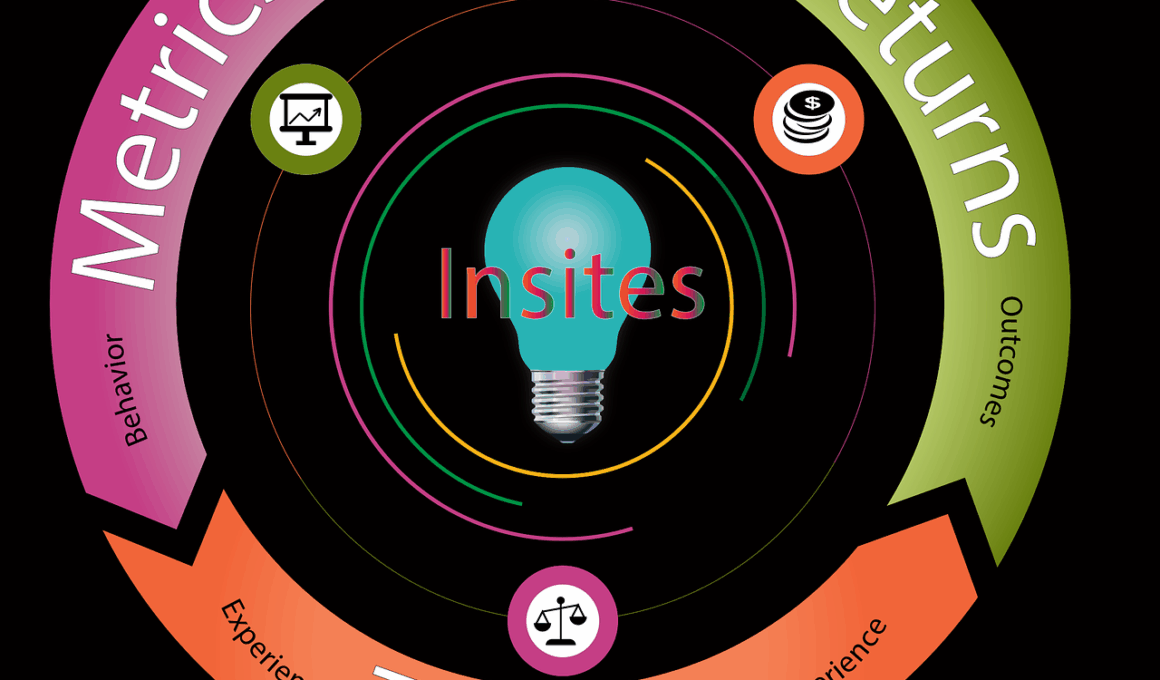Measuring SEO Success: Key Performance Indicators
In the realm of online marketing, understanding how SEO strategies perform is crucial. Key Performance Indicators (KPIs) are the definitive metrics that can gauge the successes of your SEO efforts. These indicators provide a tangible way to measure your progress in achieving your SEO goals. For effective measurement, businesses need to establish specific, measurable goals aligned with their overall marketing strategy. Factors such as organic traffic, keyword rankings, and conversion rates are primarily monitored. By tracking changes in these metrics, businesses can evaluate the effectiveness of their optimization techniques. Utilizing tools like Google Analytics and Search Console aids in gathering the necessary data to analyze performance effectively. Many companies also set benchmarks to compare their performance over time, which further enhances understanding. Regularly assessing these KPIs allows for necessary adjustments, ensuring that SEO initiatives align with the ever-evolving search landscape. Ultimately, the right KPIs will align with overall business objectives, reflecting growth and areas needing enhancement, thus painting a complete picture of SEO effectiveness.
One primary KPI to evaluate is organic traffic, representing the number of visitors coming from search engines. Tracking this metric closely helps businesses understand their visibility on search results pages. Moreover, increases in organic traffic often link to successful SEO strategies. It is vital to monitor the performance of your pages through analytics tools to assess which pages generate the most traffic and why. Alongside organic traffic, keyword rankings must also be assessed. Monitoring specific target keywords shows how well your content is performing. As keyword positions shift, you can apply optimized strategies to targeted areas efficiently. This analysis not only showcases your performance in search results but also helps identify potential growth keywords that may need attention. Additional elements to consider include understanding user intent behind your keywords, which can significantly inform your content strategy. By consistently tracking keyword rankings, adjustments can be made to stay ahead of competitors. Keeping your finger on the pulse of these factors ensures a proactive rather than reactive approach to SEO, yielding better long-term outcomes.
The Importance of Conversion Rates
Conversion rates are another essential KPI that organizations should monitor to gauge SEO success effectively. This metric shows how many visitors complete a desired action on your site, such as filling out a form or making a purchase. High conversion rates indicate that your SEO efforts are bringing in qualified traffic that is likely to engage with your content. To maximize conversion rates, aligning your landing pages with the target audience’s expectations is crucial. Furthermore, implementing A/B testing may reveal insights into the effectiveness of different webpage designs. Adjusting CTAs (calls-to-action) and tracking user interactions can uncover areas for optimization, ultimately driving better conversion rates. Additionally, analyzing the customer journey provides a more comprehensive view of conversion patterns. Understanding where potential customers drop off or what they engage with offers actionable insights to improve those pathways. Remember, driving traffic without conversions does not reflect successful SEO. Thus, focusing on this KPI enhances the relationship between attracting visitors and turning them into loyal customers, building long-term value for the business.
Another vital aspect of measuring SEO success lies within user engagement metrics. These indicate how users interact with your website and include bounce rates, average session duration, and pages per session. Monitoring bounce rates can reveal if users are quickly leaving your site upon arrival. High bounce rates often indicate that your content is not resonating with them, thereby showing a mismatch in user expectations versus what is offered. Improving content quality and relevance is essential here to keep visitors engaged. On the other hand, average session duration reflects the time users spend on your site, implying engagement levels. If users remain longer, it suggests that your content is valuable and engaging. Similarly, analyzing the pages per session can unveil how deeply users explore your website. Increased exploration indicates that your internal linking and content organization are effective. Hence, these engagement metrics provide critical insights, demanding regular monitoring. Striving for improved user experiences through quality content results in enhanced engagement chances, ultimately boosting conversions and SEO impact on your business’s growth.
Using Backlinks as a KPI
Backlinks serve as a powerful indicator of SEO success and authority. They represent external sources linking back to your website, signaling trust and relevance to search engines. Quality backlinks, from authoritative sites, can significantly enhance your domain authority and climb rankings. Regularly monitoring the number and quality of backlinks helps gauge your site’s credibility in the eyes of search engines and users alike. Leveraging tools like Moz or Ahrefs can provide insights into your backlink profile. Identifying the sources driving these links contributes to understanding your content’s reach and appeal. Moreover, analyzing lost backlinks can provide information on any areas needing improvement. Disavowing toxic links can prevent penalties that may harm SEO metrics. Therefore, a strong focus on building quality backlinks through outreach and content marketing can help enhance SEO visibility and credibility. Ensure that the backlinks are relevant to your niche, as irrelevant links may lead to diminished trustworthiness. In summary, backlinks remain a fundamental KPI that should not be overlooked in your SEO measurement strategy.
Another critical metric is organic click-through rates (CTRs), reflecting how often users click on your website in search results. CTR can reveal the effectiveness of your meta titles and descriptions in attracting clicks to your site. A compelling title and description improve the chance of users choosing your link over competitors. By optimizing these elements with relevant keywords while ensuring their appeal to visitors, you can significantly improve your CTR. Additionally, comparing CTR across different keywords provides insights into the performance of your SEO initiatives. Analyzing patterns in CTR helps identify which keywords resonate most with your audience, guiding your content strategy. It is pertinent to A/B test various meta descriptions to determine which versions yield the best results. Lower CTR can often indicate that your content appears less relevant to users, prompting a reevaluation of your strategy. Continuous optimization of titles and descriptions, reflecting the search intent can lead to improved positions and impressions as well. Therefore, monitoring CTR establishes a clearer connection between how well your SEO efforts translate into actual traffic growth.
The Role of Technical SEO in Performance Metrics
Lastly, technical SEO performance should not be neglected when measuring overall SEO success. This encompasses aspects like website speed, mobile-friendliness, and secure connections, all crucial for optimal performance. Google considers site speed a ranking factor; slower pages can lead to higher bounce rates and lower rankings. Implementing tools such as Google PageSpeed Insights can help identify issues affecting load times. Similarly, ensuring your site is mobile-friendly is vital in today’s digital landscape, given the increasing number of mobile searches. Responsive design and accessibility enhancements can significantly improve user experience and rank higher in mobile search results. Safety also plays a part; sites using HTTPS encryption secure user data, which can improve rankings. Additionally, implementing SEO audits regularly enables the discovery of technical issues that may hinder performance. Addressing these factors strengthens your site’s foundation, making it more appealing to users and search engines alike. By emphasizing technical SEO in your overall strategy, businesses can vastly improve their chances of success in the competitive landscape of digital marketing.
In conclusion, measuring SEO success through clear KPIs can yield significant benefits for any business undertaking online marketing. Understanding and integrating various metrics into a cohesive strategy aids in ensuring objectives are met or exceeded. From tracking organic traffic and keyword rankings to focusing on conversions and user engagement, these measures provide a roadmap for continuous optimization. Additionally, monitoring backlinks and click-through rates offers insights into authority and relevance within a particular industry. All these factors create an extensive performance overview, allowing marketers to adapt rapidly to changing landscapes. Finally, technical SEO plays a pivotal role in solidifying successes, ensuring websites appeal both to users and algorithms. Regular reviews and strategy adjustments based on measured outcomes drive improvement, ensuring competitive advantage is maintained. Therefore, investing time and resources into effectively understanding these KPIs is crucial for leveraging SEO investments. As businesses evolve and digital landscapes shift, keeping track of these metrics will guarantee sustained growth. In this increasingly digital age, harnessing the power of SEO and its measurement becomes vital for any successful marketing strategy.


